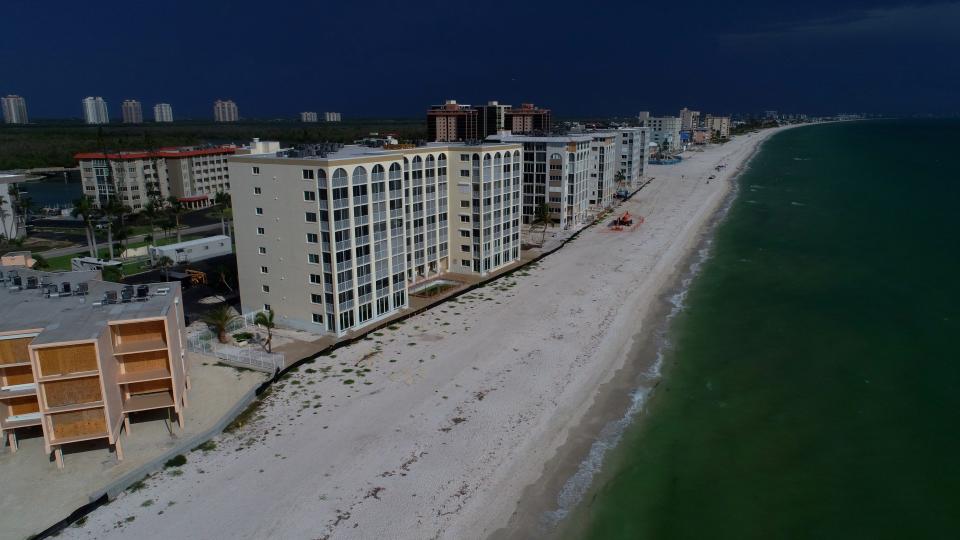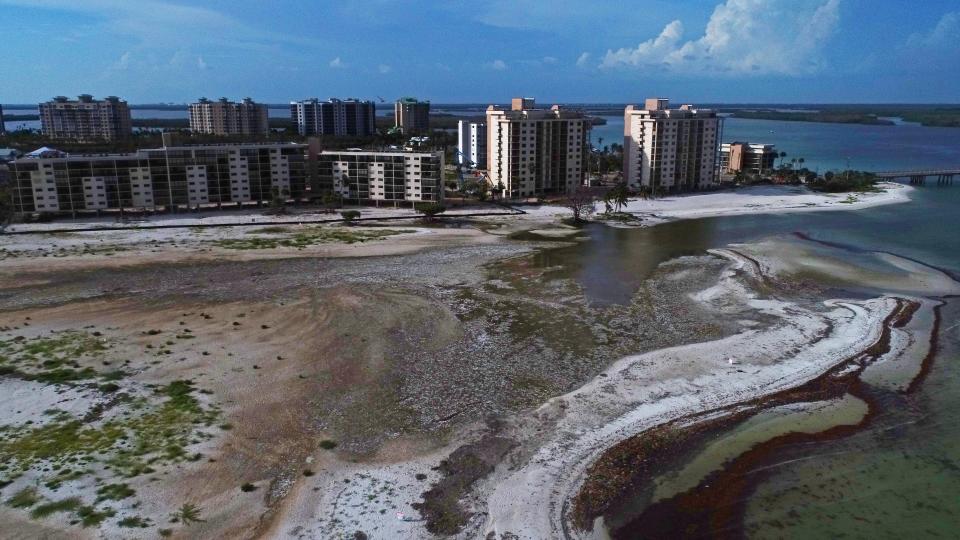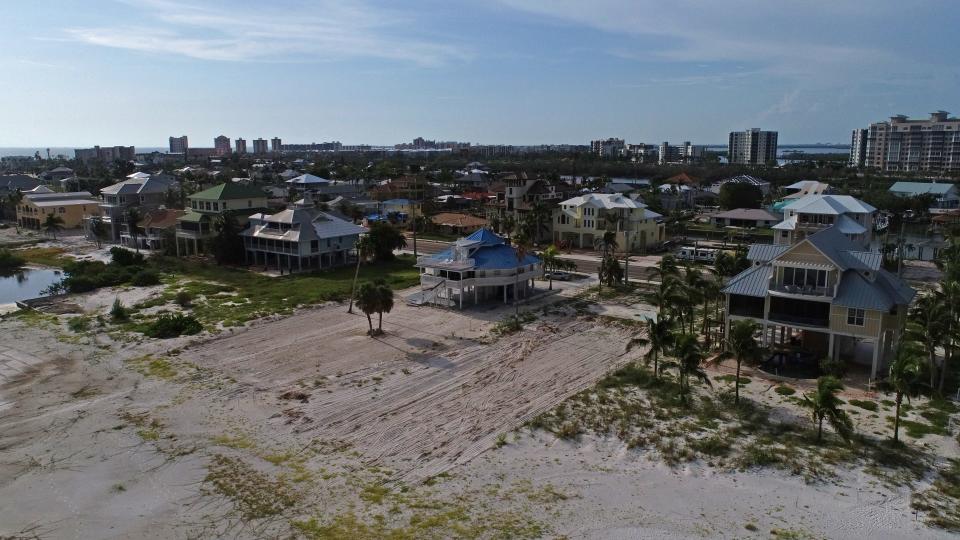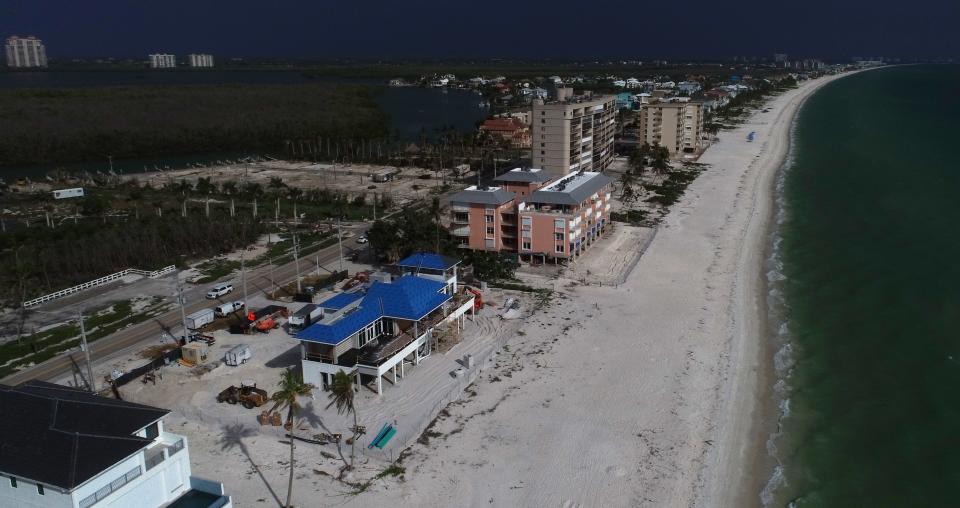Should we abandon parts of coastal SWFL? At least one climate planner thinks we should
Hurricane Ian rearranged Southwest Florida's landscape.
From swallowing-up the famous Dome Homes south of Marco Island to blasting the Gulf of Mexico up the Caloosahatchee River, the storm pounded our region with 150 mph winds and up to 18 feet of storm surge.
The aftermath raised questions about the dangers of living in a subtropical paradise like Southwest Florida.
How do we rebuild in the wake of a Category 4 hurricane? What if we get hit by another storm when we're so vulnerable? Who's going to help?
Retired planner and climate expert Jim Beever says he and others identified several vulnerable areas in Lee and Collier counties decades ago, but that people continued to build in dangerous areas.

When asked if we should abandon certain coastal areas in the wake of the damage from Hurricane Ian and the larger storms that are expected in the future due to climate change, Beever said: "yes."
"We have for decades in Florida had coastal construction setback zones which say you shouldn't build waterward of that line, and unfortunately they've given people permission to build beyond those lines," Beever said. "There are zones that should not be developed extensively."
Just what areas should we abandon?
"A lot of Fort Myers Beach and the various barriers islands and quite a few of the low-lying areas in Cape Coral, Charlotte, Lee and Collier counties," Beever said. "All these counties had tropical storm surge maps that would show areas that were going to be heavily impacted areas due to storm surge, and people still built there."
Beever said it's typically referred to as managed relocation, and it was done extensively in the Punta Gorda community following Hurricane Charley (2004).
More: Well-known FGCU professor accused of downplaying blue-green algae by water advocate
"The governments have moved wastewater treatment plants and emergency facilities and fire stations and police stations out of these hazards zones, and you notice they put emergency response centers far away from the coast, so they''ll be safe during storms."
During part of his career, Beever worked at the Southwest Florida Regional Planning Council, which, during decades past, had power to help decision-makers access the risks of building in wetlands and on low-lying lands.
"We used to have economic planners at the Regional Planning Council, and they'd tell the city council and mayors and commissioners," Beever said. "So, they knew."
Abandoning valuable coastal property is not a popular idea in most communities here as beach-side homes and condominiums represent some of the most desirable real estate in the nation.
Some people have left our area, with some of those fleeing the Sunshine State altogether after experiencing such a devastating storm.
But Southwest Florida remains one of the most popular areas in the nation in which to live and work.
Mike Savarese is a professor, researcher and climate preparation expert at Florida Gulf Coast University.
He said storm surge is one area this region could focus on to prepare for the next major hurricane.
Savarese points out that, unlike Hurricane Ian, major Hurricanes Charley, Wilma and Irma were mostly wind events. It's possible, he said, to design and build structures that are capable of withstanding major hurricane force winds.
Storm surge, which ripped the Fort Myers area apart last September, is a different challenge for coastal development.
More: Researchers: Asian crustacean is invading the lungs of south Florida's native snakes
"From an engineering perspective it’s easy to design buildings that will withstand those winds," Savarese said. "We haven’t really focused on surge. (Ian) was the first storm since Donna in 1960 that we’ve experienced significant storm surge, and in terms of resilience capacity to storm surge, it’s a different dynamic. I think what we learned quickly how raised elevation can make a difference."
Savarese said having natural areas along the coast that aren't developed helps protect inland areas from further storm damage.
"One thing we learned is green infrastructure is important," Savarese said of Hurricane Ian. "Places that had significantly broad dunes, even though they’re short in stature, fared better. So if you were a development on Sanibel Island and you’re behind one of the multiple dune ridges, the surge didn’t penetrate as far as where construction was right at the coastline or behind a sea wall."
"But a lot of dune structure is gone," Savarese continues, "and you can’t take the homes off that landscape and restore it to its natural state."
Savarese said one study showed that Collier County's damages from Hurricane Ian were $68 million, and that without mangrove coverage along the shoreline, damages would have been $81 million.

Real estate analyst Matt Simmons, of Maxwell, Hendry & Simmons, said it's not practical for the public to buy areas that have already been developed, like the north end of Bonita Beach, an area Beever says should have never been developed.
Simmons said neither the state of Florida nor a local government will buy or take private property in the name of climate preparedness or some type of relocation.
"When you see the devastation of a catastrophic storm like Ian, it raises the idea of 'are we building on sandbars' and I get all that," Simmons said. "But there's a practical component that is usually missing in my view. Who's going to pay for that, and that's not a throw-away question. In Florida, we've got property rights and if there's infringement on that the property owners is going to be compensated full on."
Simmons said the idea of relocating people away from vulnerable areas is a valid idea, but that "hardening" coastal communities here is the more practical solution.

"The newer structures on Fort Myers Beach, even with hours upon hours of 100 mph plus wind and 15-feet surge, most of those buildings did exactly what they were supposed to do under the most extreme circumstances," Simmons said. "(But) we've got to limit public exposure to footing the bill, and that's a fair conversation."
Julie Wraithmell, executive director of Audubon Florida, said creativity during the rebuilding process may help better prepare the shoreline for the next major hurricane.
"We do have to think that while we want people to recover what has been lost, that recovery may need to be more creative than building everything back as it was before," she said. "The land it's sitting on is not the same as it was before."
Wraithmell, like Savarese, said having natural features along coastal areas helps protect areas further inland as mangrove forests and beach dunes absorb a tremendous amount of force during hurricanes.
"There are some innovative programs where the state bought out some homes in low-lying areas in the Panhandle that flooded during (Hurricane) Michael, and it made sense to protect that drainage," Wraithmell said. "And as sea level rise and marches up slope, there needs to be room for the mangroves to have breathing room. We need room for coastal systems for long-term survival."
The Fort Myers-Sanibel area gets most of the attention when it comes to media coverage of Hurricane Ian, but Collier County and the Naples area, too, were hit hard.
"Mother's Nature is going to win out if you plan poorly," said Dan Summers, director of Collier County Emergency Management. "But most of our coastal areas that are buildable have been built-out, so there is not too much in the coastal high hazard zone left to build on."
Summers, too, was impacted by the intense storm.
"That last little shift to the east got north Collier and all of our coastal communities," Summers said. "My own house got whacked in North Naples, and I haven't seen that type of storm surge in 40 years."
Summers said there are plenty of projects local, state and federal agencies can work on to better prepare our coast for the next major storm.

What can be done?
"Become more disaster resilient and make good investments in that area and encourage the private sector to break that damage-repair cycle because it's expensive and challenging to put out community back together," he said.
Beever said he expects dangerous and possibly costly coastal development will continue, despite warnings of rising seas and the fact that climate change is expected to cause larger, more destructive storms.
"They keep approving more and more infrastructure in these zones and they think they'll be safe if they're above the storm surge, but you've got to get in and out of that building and all that will be destroyed and your vehicles won't work or they'll be gone," Beever said.
Connect with this reporter: Chad Gillis on Facebook.
This article originally appeared on Fort Myers News-Press: Should parts of SWFL be abandoned in the aftermath of Hurricane Ian?

